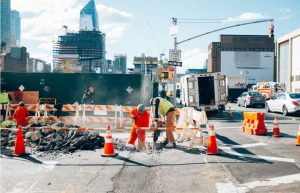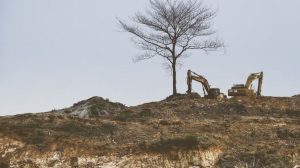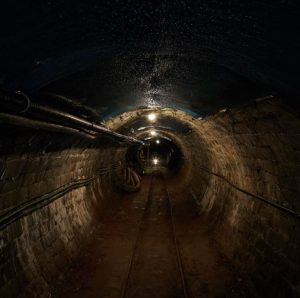
Detecting objects underground using imaging and sensor technology has always presented a challenge to those seeking to look below the Earth’s surface. Many times, while digging underground, one must rely on poorly-kept records to search for subsurface objects rather than accurate detection technology. However, a recent experiment conducted by British scientists may be a sign of change (ScienceDaily).
Researchers at the University of Birmingham have successfully used a quantum gravity sensor to detect a tunnel underground. This discovery is the first of its kind in the field of quantum sensors and has implications for many fields such as archaeology and national security. Physicist Kai Bongs from the University of Birmingham called the successful use of the device “an Edison moment,” noting the massive potential for such technology can change the landscape of many fields of study. If it is widely adopted, the sensor could help predict underground natural phenomena such as earthquakes, and find archaeological artifacts and structures buried below the ground (ScienceDaily). The device could also play a role in the construction industry by detecting underground tunnels and unstable ground. Detection of such anomalies would be an important tool to construction workers who want to know if it is safe to build a large structure in a particular area (ScienceAlert).

The tool the scientists used in their experiment is called a quantum gravity gradiometer and is able to detect objects by analyzing variations in microgravity and the behavior of atoms. The device was developed under the Ministry of Defense and the Gravity Pioneer project (ScienceDaily). This sensor is more reliable than current gravity sensors, which can produce poor results when faced with environmental factors like vibrations and uneven terrain (Science Alert). Similar devices to the instrument used in the experiment have been in development for over two decades. The main goal for these devices has been to design them so that they may be used more practically in an outdoor setting (ScienceAlert).

Though this discovery is being celebrated for its potential impact, the device may see improvements and further development in the coming years. The scientists who conducted the experiment say that there are currently limitations on the size and types of structures that can be identified underground. For instance, an object with a similar density to its surroundings will be harder to find with this technology. However, the scientists believe that the device’s sensitivity can be improved with further modifications and expect practical use of the technology to increase within 5-10 years (ScienceAlert).
Written by: Matthew Jenkins
Date: March 11, 2022
Sources:
https://www.sciencedaily.com/releases/2022/02/220223111238.htm
